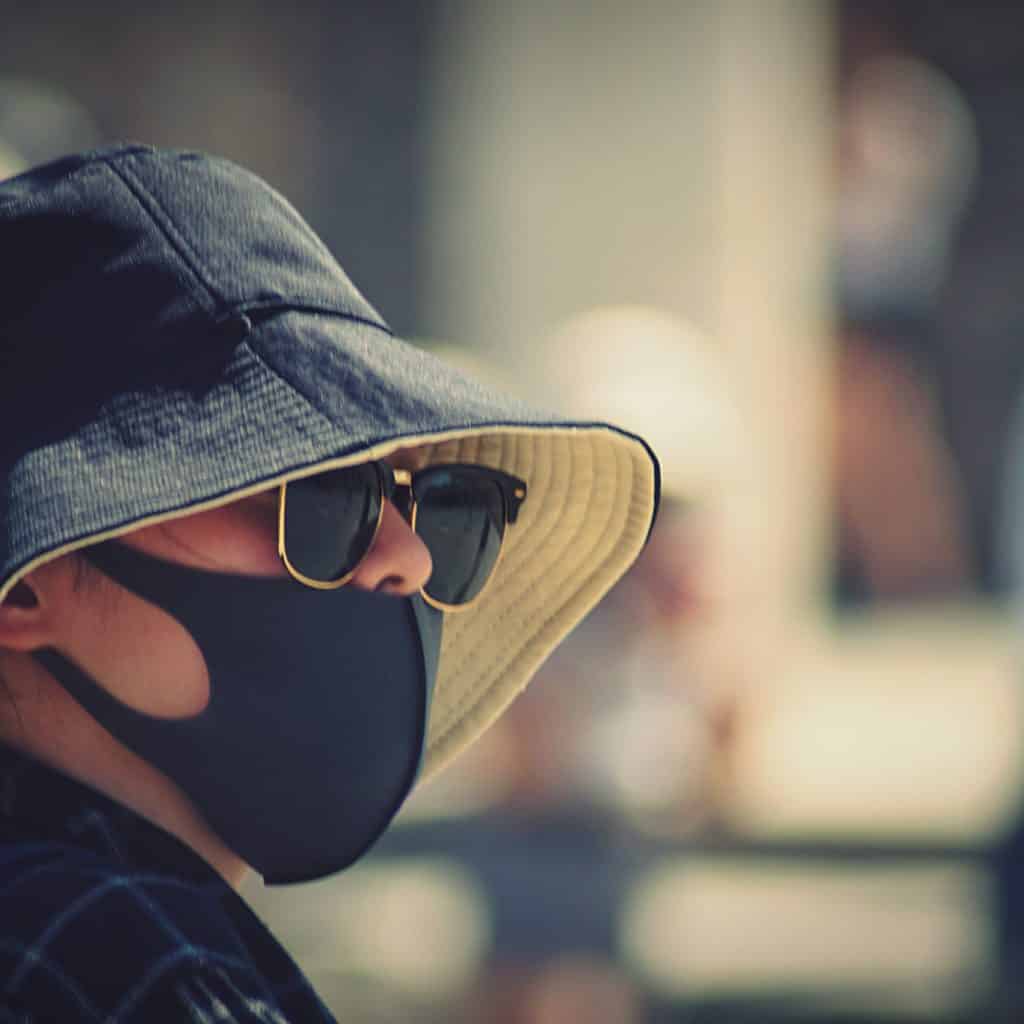There are a few things to keep in mind when considering the difference between a fear and a phobia.
- Fear is a natural emotion that protects people from harm when they face real and imminent danger.
- A phobia is an excessive fear or anxiety related to specific objects or situations that are out of proportion to the actual danger they present.
- Phobias cause significant dysfunction or discomfort due to avoidance behavior and the anxiety reaction that occurs when exposed to the phobic object or situation.
Fears vs. Phobias
The difference between fear and a phobia lies in the normality of fear, versus the abnormal features of a phobia. Phobias are characterized by:
- Persistent fear, despite being presented with evidence that the fear is unfounded
- Exposure elicits intense fear and anxiety, sometimes even a panic attack
- Irrational and unreasonable fear
- The affected individual recognizes that the fear is unfounded and excessive (except in young children)
- Powerlessness to control the intense fear
The distinction between a fear and a phobia can blur with small children. Childhood fears are a normal part of development. However, unlike phobias, normal childhood fears involve an ordinary fear response, have a minimal effect on daily function, and resolve as the child matures.
Treatment is only required for childhood fears if they significantly impair function, cause unduly severe fear and anxiety, or persist despite the child’s development; in other words, if they cross the line and become phobias.
Why We’re Afraid: Understanding Fears
Fears are a natural part of the human make-up, which is protective of life and limb. Fear is a quality that is shared by all higher animals, as no members of any species would ever survive without a protective mechanism to anticipate and react to danger, thereby protecting themselves from harm.
The brain contains specific circuits and mechanisms for perceiving and reacting to fear. The response to fear can depend upon the situation and is divided into two broad categories:
- Fight, flight, or freeze
- Tend and befriend: turning to others for safety, and changing the situation so that it is less dangerous
Fears and phobias are not the same. Fears are a normal, protective part of our make-up. Phobias are not.
What are Phobias?
Phobias are a type of anxiety disorder that is distinctly different from normal fear. Phobias are defined, according to the DSM-5 (the American Psychiatric Association’s Diagnostic and Statistical Manual, Fifth Edition), as fear or anxiety that is persistent (even when the phobic object isn’t there), excessive and out of proportion to the actual danger posed by the object of the phobia.
Phobias occur when there is dysfunction in the brain circuits responsible for the fear response. They recognize non-dangerous objects or situations as imminent threats and experience excessive fear and anxiety.
Diagnostic Criteria for Different Types of Phobias
According to the DSM-5, there are three types of phobia:
- Specific phobias
- Social phobia (now known as social anxiety disorder)
- Agoraphobia
The clinical characteristics of phobias depend on the type of phobia, the degree of severity in a particular individual, and the amount that it interferes with the individual’s ability to function normally. However, common to all three types of phobias is extreme fear or anxiety in response to a particular object or situation.
Specific Phobias
The DSM-5 outlines criteria for a specific phobia diagnosis:
- The fear or anxiety is about a specific object or situation
- The object of the phobia nearly always causes immediate anxiety or fear
- The phobia causes avoidance of the object or situation, or they are endured with great discomfort
- The fear or anxiety occurs at levels excessive for the actual danger posed by the phobic object or situation
As well, the diagnostic criteria for specific phobias specify that the fear, anxiety, and avoidance behavior must last more than six months, cause significant distress or impairment in functioning, and not be due to another mental health disorder or substance use.
There are nearly limitless possible phobias, but some common specific phobia examples are:
- Animals, especially snakes (ophidiophobia), spiders (arachnophobia), and dogs (cynophobia)
- Seeing blood (hemophobia), receiving or seeing an injection (trypanophobia)
- Loud sounds (ligyrophobia or phonophobia)
- People, such as clowns (coulrophobia)
- Situations, including enclosed spaces (claustrophobia), heights (acrophobia), and flying (aerophobia)
- Environmental, such as water (aquaphobia), thunderstorms (astraphobia), darkness (nyctophobia), tunnels and holes (trypophobia)
Specific phobias can involve virtually anything, such as a phobia of envelopes that don’t have a company name on them (episolaphobia), pumpkins (cucurbitophobia), or silence (sedatephobia).
Specific phobias are the most common of the three types of phobias and are the most common type of anxiety disorder in the United States. Data from the U.S. National Comorbidity Survey Replication (NCS-R) show that the lifetime prevalence of specific phobias among American adults is 12.5%. Most people with specific phobias have more than one; on average, these individuals have at least three specific phobias.
Social Phobias
Social phobia, also known as social anxiety disorder, is not a specific phobia but is classified as an anxiety disorder in the DSM-5. Social phobia in the DSM-5 is renamed to social anxiety disorder to remove the common impression that it is a specific phobia. However, the criteria for social anxiety disorder and social phobia are the same.
Social phobia symptoms are based on a persistent, irrational fear of embarrassment in social situations, particularly being negatively judged by others due to visible anxiety symptoms. Typically, people with social phobia experience intense fear or anxiety about:
- Specific social situations, especially those where they may be scrutinized by others
- Humiliation, embarrassment, and rejection due to their anxiety symptoms
- Almost any social situation
Although most people are afraid of being singled out or embarrassed in public, people with social phobia experience fear or anxiety out of proportion to the actual situation and cannot function well because of their avoidance behaviors.
Agoraphobia
Agoraphobia is an excessive fear of having a panic attack in situations that would be embarrassing and from which escape is not possible. Agoraphobia symptoms vary from obsessively avoiding certain situations (such as crowded rooms or public transport) to the complete inability to leave home.
Agoraphobia is diagnosed by matching up the symptoms with the agoraphobia DSM-5 criteria. Agoraphobia in the DSM-5 is listed as an anxiety disorder and is therefore not considered to be a specific phobia, despite its name. Because agoraphobia is set off by the fear of having panic attacks, it is closely associated with panic disorder.
Difference Between Fear and Anxiety
Much like the difference between fear and phobia, the difference between fear vs. anxiety is also based on natural and functional versus excessive and dysfunctional. Fear is an emotional reaction to a specific, real danger, while anxiety is an intense fear that may be triggered by a stimulus that is excessive, unpredictable, and unfocused. Anxiety may persist long after the trigger, if any, is removed.
Fear, phobias, and anxiety fit together because a phobia may cause fear and anxiety.
Treating Phobias
The more disruptive a phobia is to an affected individual, the more likely they are to seek treatment. For example, someone who has a phobia of clowns (coulrophobia) may find it easy to simply avoid clowns and may not find bothering with treatment to be worthwhile. On the other hand, someone with a fear of flying (aerophobia) who has a job that requires travel may seek treatment urgently.
The first choice for phobia treatment involves overcoming fear and reducing phobic avoidance behaviors through exposure therapy. With exposure therapy, affected individuals are exposed to their phobic object or situation is gradually increasing amounts until the situation or object no longer elicits the excessive fear response. They are taught techniques for calming themselves and dealing with anxiety.
For exposure therapy to work, the individuals must remain in the phobic situation until their anxiety decreases. As well, they are not cured; they often have to continue with exposure on a regular, ongoing basis. This can be done as self-exposure.
A large body of evidence supports exposure-based therapy as one of the most effective treatments for specific phobias. Psychotherapy and medication use have been shown to add little benefit to exposure therapy alone. However, benzodiazepine medications are sometimes used on a situational basis, such as before boarding a flight for those with aerophobia.
Kazmo Brain Center is a counseling center located in Frisco, Texas specializing in mental health and will work with you toward a happier and more satisfying position. If you or your loved ones are facing mental health issues and you think that you need help, Request an appointment at Kazmo Brain Center, and we are here to help.
Resource: www.therecoveryvillage.com





